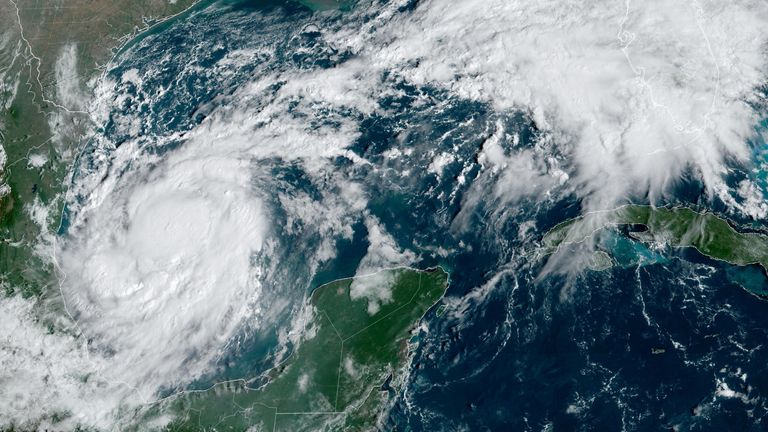As Hurricane Milton intensifies, it’s making headlines with its impressive wind speeds of up to 155 miles per hour, barreling past Cancún and heading directly for Florida.
The U.S. National Hurricane Center (NHC) has classified this storm as a dangerous Category 5, warning that it could be “potentially catastrophic” for communities along Florida’s western coast.
Predictions suggest that Milton will continue its northeast trajectory before making a sharp turn toward Tampa, where residents are preparing for the worst.
Preparing for Impact: The Threat of Storm Surges
Tampa Bay and nearby areas are on high alert, expecting storm surges that could reach up to 15 feet.
As many residents try to evacuate, traffic congestion is becoming a significant issue.
The rainfall accompanying Milton is also a major concern; forecasts predict anywhere from 5 to 10 inches, with some locations potentially seeing up to 15 inches.
This deluge could lead to flash flooding and overwhelmed drainage systems, contributing to significant flooding inland.
Rapid Transformation: Milton’s Unpredictable Evolution
Meteorologists were taken aback by Hurricane Milton’s rapid evolution from a tropical depression with wind speeds barely reaching 38 mph to a formidable Category 5 hurricane in less than three days.
While the NHC suggests there might be a slight weakening of the storm as it crosses the Gulf of Mexico—potentially dropping to a Category 3—Milton is still expected to pose a serious threat through its landfall in Florida.
Communities on High Alert: Tampa’s Vulnerability
Cities along Florida’s west coast, particularly from Spring Hill in the north to Cape Coral in the south—including Tampa, St. Petersburg, and Venice—are bracing for the impact of Hurricane Milton.
According to models from Ventusky, the most severe effects are likely to be felt into the early morning hours of Thursday, with the eye of the storm expected to move through central Florida before making its way along the eastern coastline after 5 AM Eastern.
Dr. Steven Godby, a natural hazards expert from Nottingham Trent University, highlights Tampa’s vulnerability due to its low-lying geography and dense population.
“Tampa has long been regarded as the most vulnerable metropolitan area in the United States to storm surge flooding,” he explained.
While direct hits from hurricanes on Florida’s west coast are rare, the combination of shallow offshore waters and extensive development makes it particularly susceptible to flooding.
Historical Context: Lessons from the Past
Reflecting on the last major hurricane to impact the Tampa Bay area—a Category 3 storm that struck on October 25, 1921—Dr. Godby noted that it caused significant damage with a storm surge of 3-3.5 meters and winds reaching 185 km/h.
At that time, the population was around 160,000, but today it has surged to over three million, many residing just a few meters above sea level.
This increases the risk for a wide range of infrastructure, including homes, schools, and critical services.
Seeking Help: Resources for Residents
For Florida residents in need of assistance, resources are available.
The State Assistance Information Line (SAIL) can be reached at 1-800-342-3557, and the FEMA Helpline is available at 1-800-621-3362.
With Hurricane Milton making its approach, staying informed and prepared is essential.
